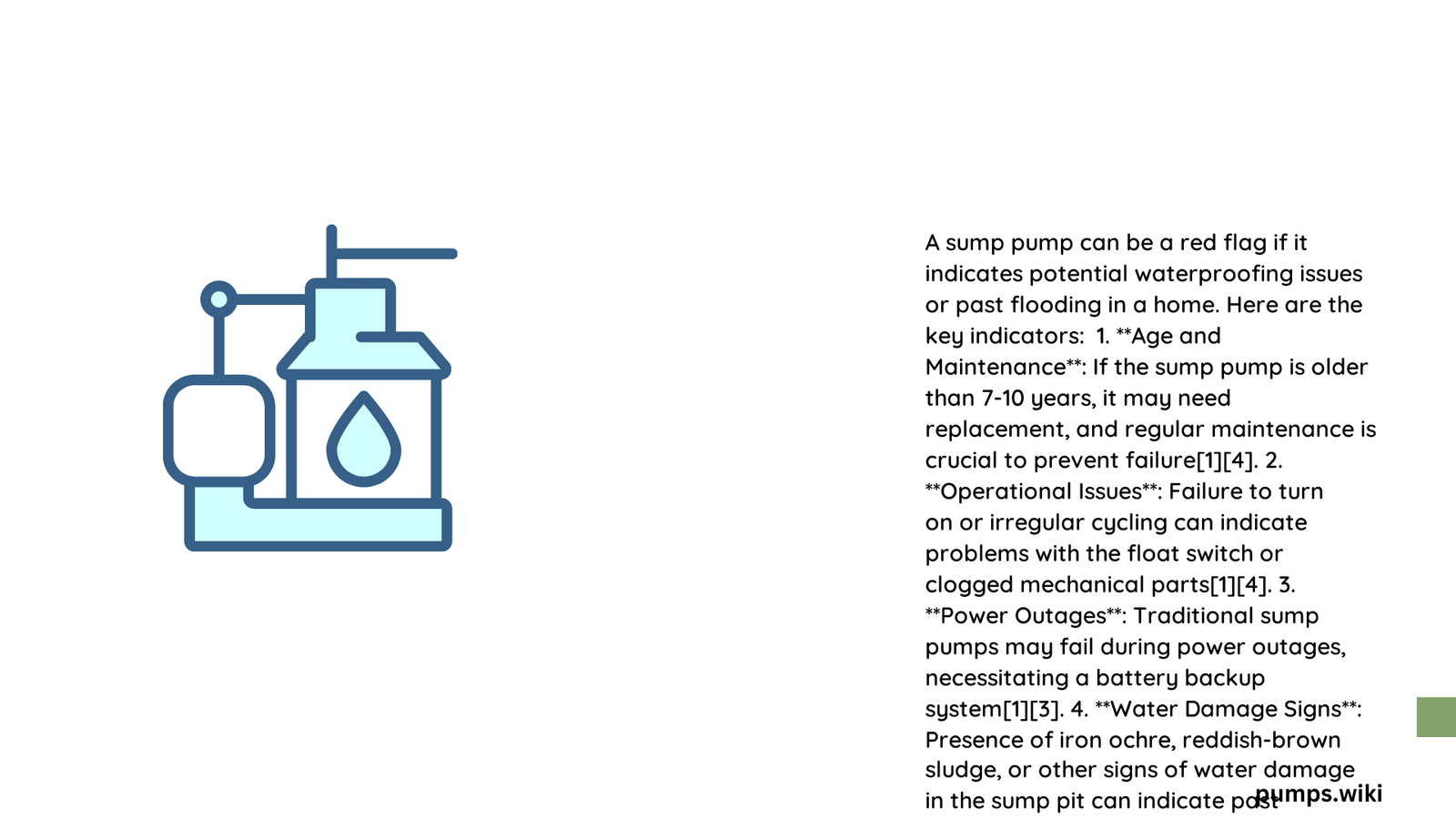A sump pump can be a critical home protection system, but it can also signal potential water management problems. Homeowners should be alert to warning signs that indicate potential failures, which could lead to significant water damage, structural issues, and costly repairs. Understanding these red flags is essential for proactive home maintenance and preventing catastrophic water-related incidents.
What Are the Primary Red Flags for Sump Pump Problems?
How Can Unusual Sounds Indicate Sump Pump Failure?
Sump pump noises are often the first warning sign of potential mechanical issues. Here are critical sound-related red flags:
| Sound Type | Potential Problem | Recommended Action |
|---|---|---|
| Grinding | Damaged Impeller | Immediate Inspection |
| Loud Rattling | Loose Components | Professional Assessment |
| Continuous Humming | Motor Strain | Potential Replacement |
What Water Level Issues Suggest Pump Malfunction?
Water accumulation in your sump pit despite pump operation is a significant red flag. Key indicators include:
- Water level remains constant or increases
- Pump runs continuously without reducing water
- Visible water pooling around the sump pit
- Inconsistent water removal during activation
How Frequently Should a Healthy Sump Pump Operate?
A well-functioning sump pump should have predictable operational cycles:
- Activates during heavy rainfall
- Runs for short, efficient periods
- Maintains consistent water removal speed
- Stops immediately after water drainage
What Maintenance Signals Potential Problems?
Age and Performance Considerations
- Pump Age: Systems over 7-8 years require close monitoring
- Annual Inspection: Professional evaluation recommended
- Replacement Interval: Typically every 10 years
What Are the Financial Risks of Sump Pump Failure?
Potential damage costs can be substantial:
- Minor Water Damage: $500 – $5,000
- Structural Repairs: $10,000 – $50,000
- Mold Remediation: $2,000 – $6,000
How Can Homeowners Mitigate Sump Pump Risks?
Proactive strategies include:
- Install battery backup systems
- Perform quarterly maintenance checks
- Monitor pump performance during wet seasons
- Replace aging equipment preemptively
Expert Recommendations

Professional waterproofing experts suggest:
– Test sump pump functionality quarterly
– Clean sump pit regularly
– Ensure proper electrical connections
– Invest in high-quality backup systems
When Should You Immediately Replace Your Sump Pump?
Immediate replacement is crucial if you observe:
– Consistent water accumulation
– Frequent motor cycling
– Unusual mechanical noises
– Visible rust or corrosion
– Age exceeding 8-10 years
Final Insights
While a sump pump isn’t inherently a red flag, its condition and performance can signal potential home maintenance challenges. Regular inspection, proactive maintenance, and understanding warning signs are key to protecting your property from water-related damage.
